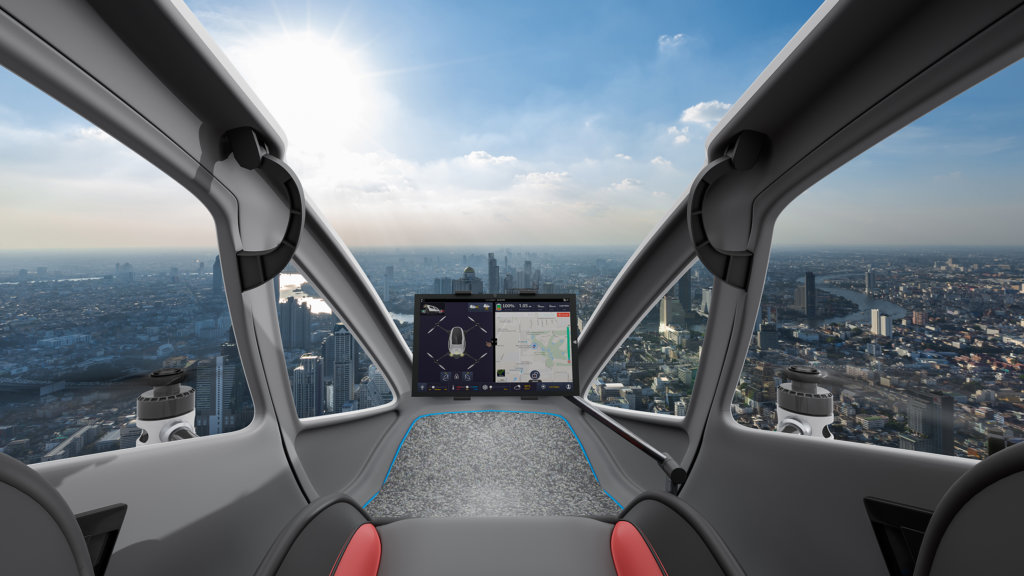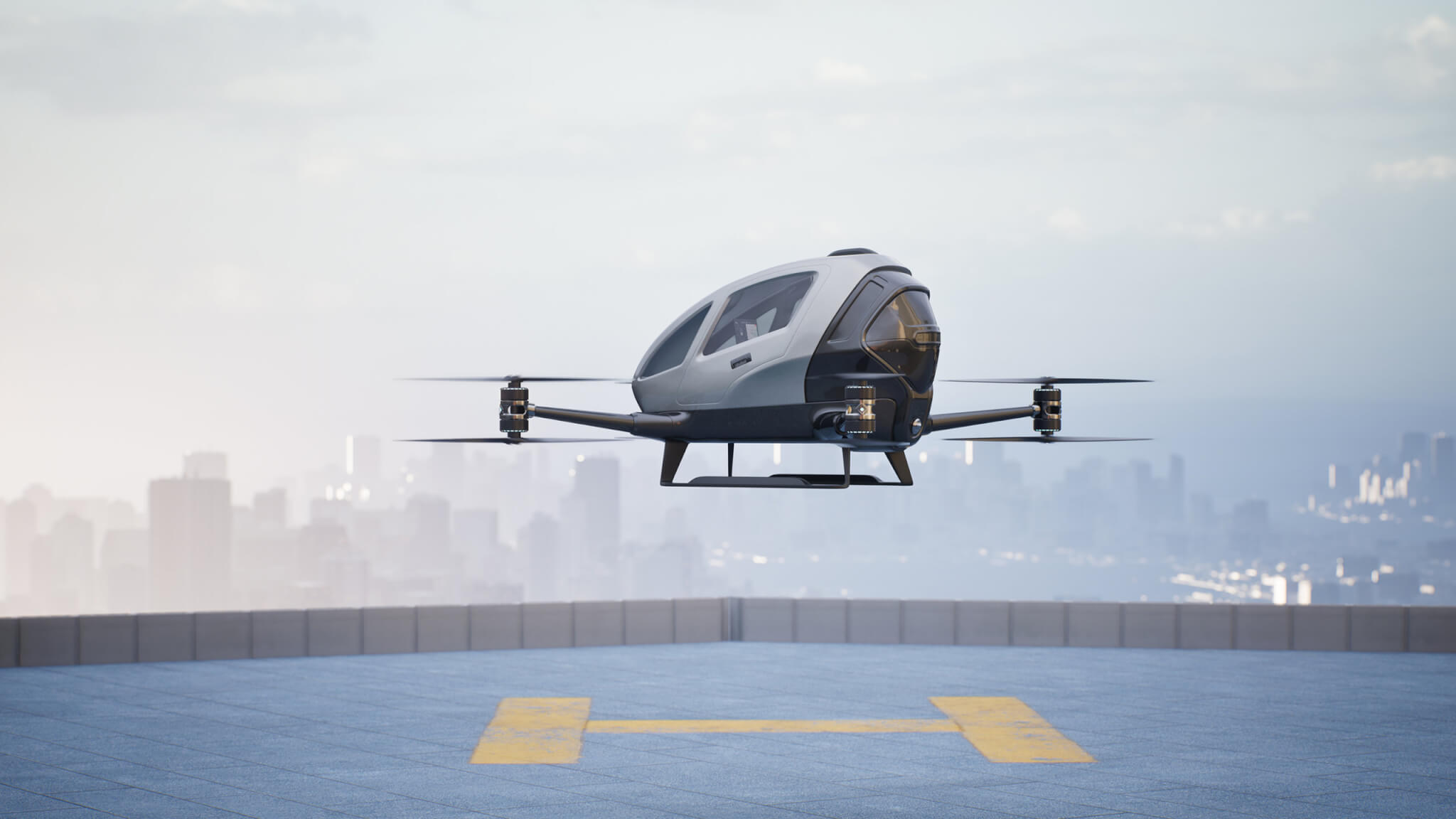Human beings have always been on the move. As a species, we have always been migratory creatures, traversing the globe searching for better food sources, water, and more palatable climates. As humans evolved, so did their demands and their modes of conveyance. Humans in areas rich with natural resources forged trading partnerships with neighboring communities. They employed waterways and animals, then moved on to creating machines. But the constant has been an interconnected world constantly in motion. Through the ages, the patterns of human behavior have changed very little; the change has evolved in how we move, not whether or not we move.
The latest chapter in human travel comes in electric and autonomous vehicles. What is urban air mobility? We’ll find out where it’s destined to go.
The Evolution of Transportation
European immigrants settled in the American West because they weren’t content to stay on the East Coast. As a result, we are explorers by nature, rovers, and voyagers—recorded history from Israel roaming through the desert to the conquests of Rome and Greece.
Walking
The wild thing about the Wild West, most notably the settlers who moved into the West in hopes of starting their own prosperous lives, was how they got there. Hollywood has traditionally dolled it up to appear as if they rode in covered wagons.
The assertion is flatly false. They walked. The mules or oxen used to pull wagons were only to pull the wagon, and wagons were already heavy; people did not ride in them.
But using animals as a significant mode of personal transportation is vastly overblown. People have walked everywhere for many centuries. As indigenous people populated the world and moved about looking for better hunting grounds, it was on foot.
We still see vestiges of this in many major cities, which are built around the premise of housing close to work to facilitate walking from residences to the workplace.
Horse Carriages
The use of domesticated horses goes back a long way. How far back is in dispute, but probably at least 3,500BC. We know that Egyptians used them to pull army chariots around 1,700BC.
Horse carriages have been found all across the globe, with evidence of the first successful carriages being found in Eurasia in what is presently Russia and Ukraine. Carriages have also been found in parts of Ancient China.
Even with domesticated horses dating back nearly six thousand years, compared to the length of human history, using horses for personal transportation is comparatively new.
That was not practical for the average human, who generally lived hand-to-mouth. Horses required stables and food, so people were still mainly walking. The industrial revolution turned out practical solutions.
Industrial Revolution: Trolleys, Cars, Subways
The industrial revolution was the turning point in human history. It was the point in time when machinery ensured that farmers could quickly produce enough crops to feed the growing world population. It also ushered in an era of human movement never before imagined.
During this time, the world’s major cities exploded, with populations shifting away from agrarian to urban societies. To support this boom, housing changed as well. Row Houses, apartments, and multi-family housing rose to house the booming workforce.
Cities became massive, sprawling metros with Burroughs abutting. As the cities spread out, the workforce couldn’t commute by foot, the preferred method for generations.
Trolleys were a robust and efficient solution. Moreover, since they operated on tracks, they were efficient and predictable, allowing the efficient movement of thousands of riders daily.
The first trolleys were horse- or mule-drawn, and some parts of the world saw these run into the 1950s! Trolleys were later powered by steam, gas, and electricity.
Rapid transit, known colloquially as the subway system in the U.S., has stood the test of time and remains a crucial mode of transit for millions of people across the globe. Exclusively electric, they operate on a right-of-way system in closed tunnels allowing them to operate much faster than trolleys.
Since trolleys shared roadways with pedestrians and, later on, bicycles, automobiles, and motorcycles, they were hamstrung in speed and were not particularly fast. Subways are much faster and can manage many times the number of passengers.
The mass production of personal automobiles is the greatest game changer in personal transportation that the world has ever seen. Not constrained by rails, they allowed people to spread out away from urban centers, which ultimately led to the prevalence of suburban areas. People could still work in major urban centers like Wall Street but live many miles away. Cars allowed them to drive to train stations in the outer areas and commute on the trains. We’ve all seen Mad Men.
But outside of major cities, cars allowed people to move away from urban centers and commute. They are inefficient, expensive, depreciate rapidly, and destroy roads. They are also significant polluters to cities where large-scale public transit isn’t readily available. Compare and contrast the smog issues of LA versus NYC.
However, it is unlikely that anyone will be willing to give up the freedom of their personal vehicles, and frankly, most cities aren’t built around the use of public transportation. However, roadways are incredibly expensive to maintain and build, and they also are dealing with finite real estate. The real solution is taking personal mobility three-dimensional.

Next Up: Urban Air Mobility
The next frontier to human movement in the urban environment is obviously in the air. Anyone who has recently driven through the Dallas-Fort Worth metro is a witness to the inability of a city to rapidly scale up in size and manage a surging population.
The solution is urban air mobility. People have been sold on the concept of a personal aerial vehicle for decades, with flying car concepts reaching back to the 1940s. But there has never been a single flying car concept that can crack the code to do both duties, so they end up being poor at both.
What Is Urban Air Mobility?
According to our friends at the FAA:
“Urban Air Mobility (UAM) envisions a safe and efficient aviation transportation system that will use highly automated aircraft that will operate and transport passengers or cargo at lower altitudes within urban and suburban areas.”
Small unmanned aerial systems (sUAS), commonly known as ‘drones,’ are changing everything as we know it. They are precursors to the urban air mobility movement. Basically, the technology employed in UAM products is little more than scaled-up sUAS technology.
There are two major factors that have limited the widespread adoption of any UAM using traditional personal aircraft: cost and skill.
Personal aircraft are far too costly to be considered as a commuting vehicle by almost everyone. They also require a considerable skill to become competent enough to safely operate them. Also, the infrastructure required to house them and operate them in the intercity environment is nonexistent.
Personal UAM automated aircraft will not require any skill from their users; they will be all pre-canned. The passenger can remain a passenger. There is no need to study airspace, emergency procedures, or anything else. It is as simple as requesting an Uber.
Where Does Urban Air Mobility Stand?
At least, in the beginning, the FAA expects UAMs to operate in much the same infrastructure as helicopters. They will follow low-level helicopter routes, visual routes designed to segregate slow, low-level traffic into specific corridors away from congested terminal areas.
The most time-consuming component of UAM is the regulatory aspect. The entire purpose of the governing bodies, namely the FAA in America, is to be risk-averse, which is why personal private aircraft remain expensive and out of reach for most people. A slew of start-ups is rapidly developing the technology for UAM, and they are already providing solutions. The real struggle from here forward lies in getting approval from the FAA. The technology of aircraft will only continue to improve quickly.
The primary concern with autonomous aircraft, especially those with passengers or cargo, is ensuring they fly safely in proximity to other aircraft, both manned and autonomous. Major aerospace manufacturer Embraer is working closely with technology leaders to accelerate the future of UAM. It will be a stair-stepped process to get to autonomous flight; there will be no straight line to autonomous flight. But the building blocks are there; the concept works and will completely change the landscape of personal intercity transportation.
https://www.faa.gov/uas/advanced_operations/urban_air_mobility/

